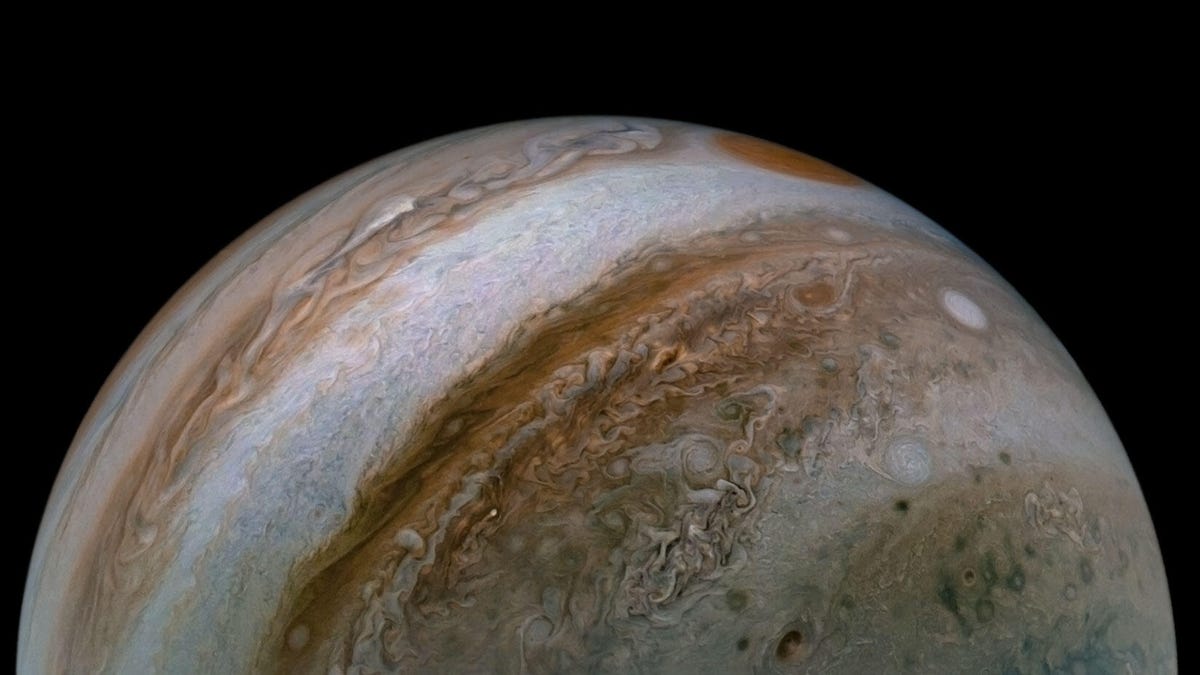Scientists stumble on a meteor smashing into Jupiter
Stare at this gas giant long enough and you'll eventually have a blast.

This color-enhanced image shows a NASA Juno view of Jupiter in late 2020.
Researchers using NASA's Juno spacecraft to check out Jupiter's auroras say they got lucky last spring and caught a very bright meteoroid explosion in the process.
Such impacts aren't rare for Jupiter, since it's the largest planet in the solar system with some seriously powerful gravity to boot.
"However, they are so short-lived that it is relatively unusual to see them," the Southwest Research Institute's Rohini Giles said in a statement. "You have to be lucky to be pointing a telescope at Jupiter at exactly the right time."
Giles is lead author of a paper published this month in Geophysical Research Letters.
Amateur astronomers have used Earth-based telescopes to spot six impacts on the giant planet in the past decade, including a pretty dramatic one in 2019. But Giles and colleagues had a distinct advantage using Juno hanging out by Jupiter itself.
"This bright flash stood out in the data, as it had very different spectral characteristics than the UV emissions from Jupiter's auroras," Giles explained.
SwRI scientists studied the area imaged by Juno's UVS instrument on April 10, 2020, and determined that a large meteoroid had exploded in a bright fireball in Jupiter's upper atmosphere. The UVS swath includes a segment of Jupiter's northern auroral oval, appearing purely in green, representing hydrogen emissions. In contrast, the bright spot (see enlargement) appears mostly yellow, indicating significant emissions at longer wavelengths.
By looking at the brightness and other data from the flash, the team estimates it came from a space rock with a mass of between 550 and 3,300 pounds (249 to 1,497 kilograms) impacting the jovian atmosphere at an altitude about 140 miles (225 kilometers) above the top of Jupiter's clouds.
Things slamming into Jupiter can be a pretty big deal. The biggest smackdown ever seen on the planet was the impact from Comet Shoemaker Levy 9 in 1994, which was widely studied.
"Impacts from asteroids and comets can have a significant impact on the planet's stratospheric chemistry -- 15 years after the impact, comet Shoemaker Levy 9 was still responsible for 95 percent of the stratospheric water on Jupiter," Giles said. "Continuing to observe impacts and estimating the overall impact rates is therefore an important element of understanding the planet's composition."
Follow CNET's 2021 Space Calendar to stay up to date with all the latest space news this year. You can even add it to your own Google Calendar.

